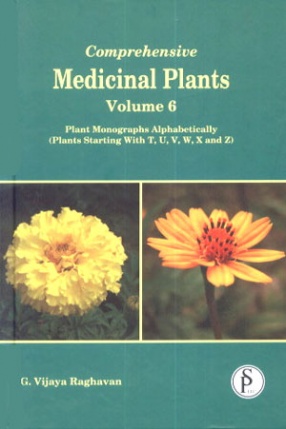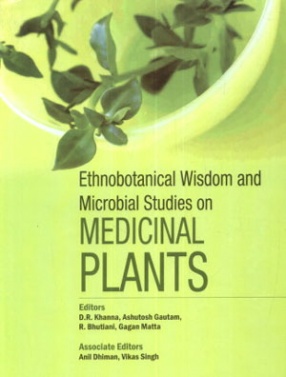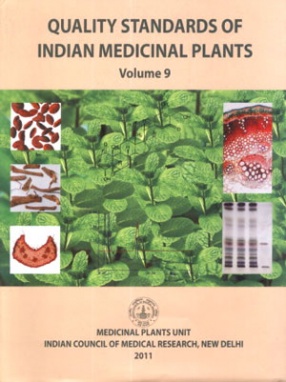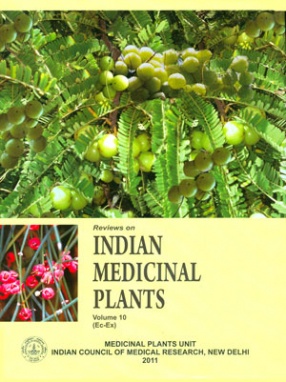
Medicinal Plants

277 books













Medicinal Plants have a curative properties due to the presence of various complex chemical substances of different composition, which are found as secondary plant metabolites in one or more parts of these plants. These plants metabolites, according to their composition are grouped as alkaloids, glycosides, corticosteroids, essentials etc. The classification is based on Bentham and Hooker, Angler and Prantal's Hutchinson's and recent system of classification. ...


Medicinal plants have played an essential role in the development of human culture, for example religions and different ceremonies. Many of the modern medicines are produced indirectly from medicinal plants, for example aspirin. Medicinal plants are resources of new drugs. It is estimated there are more than 250,000 flower plant species. Studying medicinal plants helps to understand plant toxicity and protect human and animals from natural poisons. Cultivation ...


Wealth of information hitherto scattered has been sourced from various sources and assembled in a classified format for the benefit of the reader in a unique and unprecedented manner. This detailed treatise in six volumes is written for the benefit of ayurvedic, unani, sidha practitioners, botanists, biologists, chemists, pharmacy, industry and scientists. The whole set furnishes detailed monographs of more than 1100 medicinal plants found in India. These ...

Studies on phytoconstituents from medicinal plants have experienced a great deal of changes during the least century, not only regarding the number f compounds described, but also in the concept of action and mechanism of phytoconsituents itself. Since the drug discovery process increasingly requires the availability of large number of compounds chemicals in nature offers a valuable source, for example, secondary metabolites, previously regarded as waste products ...

India has 15 Agroclimatic zones and 17000-18000 species of flowering plants of which 6000-7000 are estimated to have medicinal usage in folk and documented systems of medicine, like Ayurveda, Siddha, Unani and Homoeopathy. About 960 species of medicinal plants are estimated to be in trade of which 178 species have annual consumption levels in excess of 100 metric tones. Medicinal plants are not only a major resource base for the traditional medicine and herbal ...

Ayurveda has a very rich pharmacopia that stands unsurpassed even in these days of steadily progressing medical science of the west. The germ of the Ayurvedic system of medicine can be made out in the Vedas. The ancient sages who propounded and promoted Ayurveda had taken the trouble to examine and study the plants and drugs that came under there observation and include them in their materia medica; it is greatly to their credit that they were acquainted with a ...


The present book greatly emphasize on importance of medicinal plants which are all around us. Various scriptures and mantras in our Vedas are having description about their medicinal values. This book covers the quality research on numerous medicinal plants and factors for their deteriorating and how we can save them is given. This book could provide necessary information to the people involved in cultivation and conservation of medicinal plants.

This book is a painful attempt to bring out the age old practice of Ayurveda and tries to describe modern methods of cropping medicinal plants. Medicinal and aromatic crops are newly domesticated crops, and the information available about their cultivation aspects is very scarce. This book provides comprehensive information on the origin, distribution, description of the plant, species and varieties, soil, climate, propagation, planting, nutrition, water ...

Encyclopaedia of Ayurvedic Medicinal Plants is an amazing compendium consisting of a series of four volumes different Ayurvedic medicinal plants. It is a remarkable compilation of information on herbal medicine, chemistry, pharmacology, healing properties, treatment of ailments and biology of medicinal plants of the world. It also covers herbs from all over the world the world giving their location cultivation history of herbal medicine and the herbal traditions ...

Traditional medicine and ethnobotanical research, particularly when the literature and field work data have been properly evaluated. India is one of the twelve mega biodiversity countries of the world having rich in vegetables with a wide variety of plants with medicinal value. In many countries, scientific investigations of medicinal plants have been initiated because of their contribution to healthcare. Herbal medicines have good values in treating many ...

From the introduction: The following major guidelines have been adopted in evolving the standards and preparation of the monographs. The raw material of the plants is procured from the field from at least three geographical locations and authenticated. The samples are worked out for their pharmacognostic and phytochemical features through experiments while the information on the distribution of the plants vernacular names, chemical constituents, pharmacological ...

In recent years interest in medicinal plants has increased considerably world wide. It has also drawn the attention form common men in general and scholars in the medical streams particular due to sharp rise in problems as a result of adverse/side effects of modern medical science treatments, methods and medicines. In the today’s advanced technological era, pharmaceutical companies are launching new medicines every now and then without sound rational and ...

Efforts have been made to compile published research work on the taxa found in India whether indigenous or introduced. The present volume is the tenth of the series of 'Reviews on Indian Medicinal Plants' comprising 82 plant genra and 422 species.
The monographs cover studies on Indian medicinal plants conducted by scientists in Indian institutions and published in natioanal and international journals. At places work done by Indian scientists in collaboration ...

This book is the outcome of a project; part funded by NMPB, on development of quality assessment parameters for selected Indian medicinal plants. The project involved standardization of 16 different medicinal plants, ten out of which have been covered in the first volume of this book series.The quality assessment of medicinal plants becomes complex and challenging due to multiple end uses of each herb, lack of clear knowledge about the bio-active constituents, ...


We lack a comprehensive account of the medicinal plants used by the people of Assam in general and of Southern Assam in particular. Therefore, it is decided to bring out a document which could be interactive and could answer some relevant queries of the common man. The villagers and tribals have plenty of information regarding the uses of plants but most of it is held either in informal or in loose form. Some of these traditional knowledge is passed orally from ...

It is well known that majority of the world population (nearly four billion) relies on the plant based drugs for health care. The efficacy and safety of these drugs depend largely on their authenticity and quality. Thus effective methods of standardization and quality control of the plant drugs as well as of these extracts are necessary.
To address this issue, Indian Council of Medical Research initiated a programme for laying down Quality Standards of Indian ...


Herbs are staging a comeback and herbal 'renaissance' is happening all over the globe. The herbal products today symbolize safety in contrast to the synthetics that are regarded as unsafe to human and environment. Although herbs had been priced for their medicinal, flavouring and aromatic qualities for centuries; the synthetic products of the modern age surpassed their importance, for a while. However, the blind dependence on synthetics is over and people ...

The Neem tree (Azadirachta indica A. Juss) is a tropical evergreen plant native to east India and Burma. It grows in much of Southeast Asia and West Africa. In modern research concerns it gains equally high preference due to the potential of using neem derivatives such as leaf extract, oil, seed kernel extract, for preparation of environment friendly `soft-herbicides'. Not only these conventional approaches limit the potential exploitation of the neem plant, ...

Till today the knowledge of plants and medicines has undergone various stages. In India various system of medicine prevalent, yet Indian system of medicine, i.e. Ayurveda stands for science of life, has attained the worldwide importance. To provide the information about the common Wild Medicinal Plants of India with ethnobotanical importance of their uses, in this book has been given.
